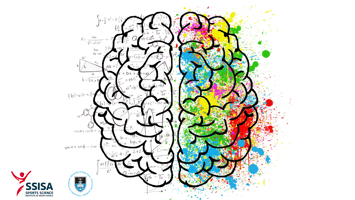Have you ever walked down the supplements aisle at the local pharmacy/supermarket? What awaits is a...
I wanted to buy a smart watch… here is what I did

Tracking physical activity and exercise is becoming more and more popular. Whether you’re an athlete looking to train better or exercising for health (and insurance loyalty points), you’ve likely sought a device that can track your activity. But how do you know which device to get? What are the factors you consider when choosing your device? Is it simply a matter of brand name, price and looks or is it more functionality? Recently, I embarked on the journey to picking a new smart watch. Here is how it went…
It all started with need (and a little bit of want). I would classify myself as a competitive endurance athlete who mainly cycles but also enjoys a bit of running and triathlon. I was after a watch that could track my activities with GPS and connect to other Bluetooth/ANT+ sensors (e.g., heart rate strap). Apart from tracking activities, I wanted a watch with a Multisport Mode (that could be used to track triathlons). Once I had some sort of idea as to what I was after, it was then time to ask the next big question…how much am I willing to spend?
Nice toys tend to cost big bucks and the smart watch industry is no different. Watch prices can range from less than R1000 to well over R10 000. The price differences, like with most things, are related to the features as well as brand name. Bigger brands and better features are often more expensive. I’ve never been one to immediately shop at the top of the range. I’m privileged enough to have money to spend on toys like this but often look for a middle-upper range product that fits my needs. A bonus nowadays is that if you wait long enough, a decent sale tends to come along to help your decision. Once I’d known what I wanted and roughly how much I was willing to spend. Then comes the next phase…reviewing options.
Fortunately, what you want and how much you’re willing to spend can help to narrow the playing field somewhat. In my case, I was hunting for a multisport watch which narrowed the brand options to the more “sports” focused watches like Garmin, Suunto and Polar as opposed to more “lifestyle” focused like Apple, Huawei, and Xiaomi. Then I compared the various features of each of the watches in my price bracket by looking on the respective websites as well as independent sites. What helped me was independent reviewers who described how the watch functioned. How it felt on the wrist, looks, its ability to connect to different phones/devices, how they felt the features worked on a ride/run, etc. The sorts of things you don’t find on the company website.
A factor I failed to consider in my choice, however, was the accuracy of measurement. There is increasing evidence to suggest that devices have varying degrees of measurement accuracy1,2. While some error might be acceptable, there may be times where accuracy is vital. Heart rate, for example, is commonly used to monitor health status and exercise intensity. Some individuals need very accurate heart readings as it could be a matter of life or death. Others use heart rate to determine exercise intensity which is important for the desired training outcome. In these cases, knowing the accuracy of the heart rate sensors is important and should be considered when picking a device.
Taking in all this information, I managed to find my watch. As you can see, it was a long process that required significant research and even then, I failed to consider all the angles. In my situation, however, I was looking for something rather specific which could have added to the complexity of the process. For others, the process may be simpler (i.e., pick a brand-name watch that looks nice). Regardless, understanding what options available and which devices have had their device accuracy tested remains useful but hard-to-find information.
Is there a market for a tech-matching service/consultant that can help you find the device you are looking for to save you the time and effort? Maybe…
To bring you the most evidence-based and cutting information in the fields of sports and exercise science and health, SSISA works alongside the UCT Research Centre for Health through Physical Activity, Lifestyle and Sport (HPALS) to disseminate the latest research. HPALS research focuses on optimizing human performance and promoting health and well-being through physical activity, sports participation, healthy eating, and good sleep hygiene. Their work begins at the DNA, to the human performance laboratory and ultimately to the community.
References:
1. Gillinov S, Etiwy M, Wang R, Blackburn G, Phelan D, Gillinov AM, et al. Variable Accuracy of Wearable Heart Rate Monitors during Aerobic Exercise. Med Sci Sports Exerc [Internet]. 2017 Aug 1 [cited 2023 Feb 16];49(8):1697–703. Available from: https://pubmed-ncbi-nlm-nih-gov.ezproxy.uct.ac.za/28709155/
2. Shcherbina A, Mikael Mattsson C, Waggott D, Salisbury H, Christle JW, Hastie T, et al. Accuracy in Wrist-Worn, Sensor-Based Measurements of Heart Rate and Energy Expenditure in a Diverse Cohort. J Pers Med [Internet]. 2017 Jun 1 [cited 2023 Feb 16];7(2). Available from: https://pubmed-ncbi-nlm-nih-gov.ezproxy.uct.ac.za/28538708/


